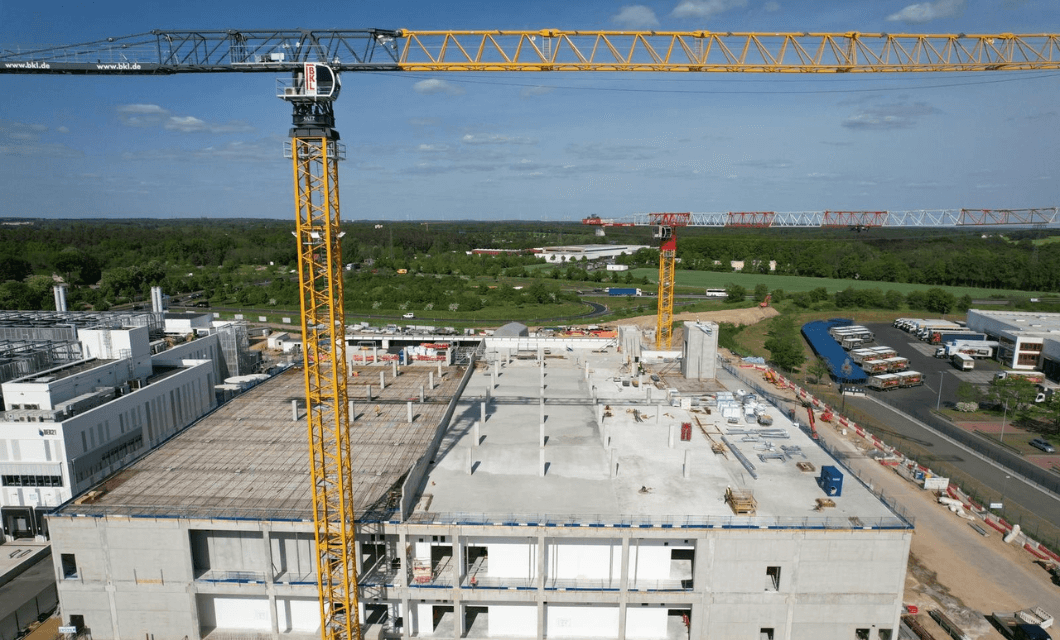Discover how gbc engineers excel in providing reliable solutions for the Structural design of data center through precision engineering, advanced technology, and proven project execution. Learn why professional developers consistently turn to this experienced structural partner for mission critical facilities.

Introduction
In today’s digital world, the reliability of a data center begins long before the first server is installed. It begins with the structural concept, a critical factor that determines the safety, performance, and resilience of the facility over decades of operation. For professional project developers, every design choice can have a significant impact on uptime, efficiency, and return on investment.
gbc engineers has built a solid reputation for precision execution, rigorous quality control, and reliable project management. Their commitment to innovation and adherence to international standards ensures that each data center is structured for long-term stability and optimal performance.
From addressing complex load scenarios to supporting modular and energy-efficient construction methods, the company’s structural experts deliver services that meet the highest industry expectations.
Understanding Structural Design of a Data Center
Structural engineering for data centers involves developing a secure, stable, and efficient framework that supports the facility’s infrastructure and mission-critical systems. It goes well beyond constructing basic elements like walls and roofs. The process requires anticipating the unique demands of a facility that must maintain continuous operation under substantial loads and often in challenging environmental conditions.
Why It Matters
The importance of structural stability in data center infrastructure design cannot be overstated. Downtime caused by structural failure can lead to enormous financial losses and reputational damage for project developer. A well-engineered structure ensures uninterrupted operations, safety for personnel, and longevity of the facility.
Structural Integrity & Capacity
1. Building Structure Assessment
At gbc engineers, the building structure assessment is a core component of our data center structural engineering service. We perform in-depth reviews of all structural drawings and calculations to ensure the facility can support mission critical loads. This includes static and live load evaluations for server racks, UPS systems, and cooling units, along with assessments of dynamic loads from generators and chillers. Our approach guarantees that each structure supports high availability and long-term operational stability.
2. Raised Floor Systems
Raised flooring is fundamental to data center infrastructure design. We evaluate load capacity, deflection control, and structural stability of raised floor systems to ensure safe support for heavy IT equipment and cooling infrastructure. Where needed, our team designs reinforcements that align with modularity and scalability goals, essential for future-ready data centers.
3. Roof & External Structures
Our engineers assess rooftop load capacity for equipment such as chillers, cooling towers, and generators. We also ensure compliance with wind and snow load requirements to protect structural performance year-round. This is particularly important for projects in diverse European climates and follows best practices outlined in international engineering standards.

Seismic & Vibration Analysis
1. Seismic Design Review
Using advanced tools such as finite element analysis and simulations, we verify that each structure is designed to withstand seismic forces. Projects are benchmarked against Eurocode 8 and IBC guidelines, ensuring international code compliance and long-term resilience for mission critical facilities.
2. Vibration Analysis
To protect sensitive IT infrastructure, we conduct vibration mapping and analysis of mechanical sources such as HVAC systems and backup generators. Based on the findings, we implement isolation measures ranging from dampers to structural decoupling systems, selected to align with the specific operational requirements of data centers.
Fire Protection & Life Safety (Structural Aspects)
1. Structural Fire Resistance
We evaluate the fire resistance of primary structural elements, such as load-bearing walls and columns, and verify alignment with applicable fire safety codes. Passive fire protection elements (e.g., coatings and compartmentation) are integrated during the structural design phase to ensure business continuity in the event of a fire.
2. Support for Fire Suppression Systems
We assess the structural adequacy for all fire suppression infrastructure, including sprinkler systems, pre-action systems, and water tanks. Load calculations are performed in both wet and dry conditions to ensure safety and code compliance without compromising IT or MEP layout efficiency.
MEP (Mechanical, Electrical, Plumbing) Support Structures
1. HVAC & Cooling Systems
Our team provides structural engineering for CRAC/CRAH units, chillers, ductwork, and cooling towers. We ensure that all HVAC components are properly supported, integrated with mechanical layouts, and compliant with weight distribution constraints.
2. Electrical Infrastructure
We design robust supports for electrical components such as transformers, bus ducts, switchgear, and cable trays. These systems are critical to data center uptime, and our designs ensure they remain accessible and safely anchored.
3. Piping & Plumbing
From water and drainage systems to fuel lines and pressurized pipes, we ensure that all plumbing infrastructure has sufficient structural support. These calculations consider both operational loads and emergency scenarios.
Compliance & Standards Adherence
Each project is reviewed against major industry standards including Uptime Institute Tier Standards, TIA-942, ASHRAE, and all relevant local codes. This guarantees full regulatory compliance and provides assurance for investors, developers, and operators in the data center sector.
Key Structural Challenges
• Load capacity: Data centers house heavy IT equipment, battery banks, and systems with significant cooling systems impact on structure. The structural integrity must support these concentrated loads to ensure safety and reliability.
• Seismic resistance: Facilities in regions requiring seismic resilient data center structures must incorporate advanced engineering strategies to prevent structural damage and ensure continuity of operations.
• Energy efficiency: Design choices such as materials, layout, and insulation affect long term energy use.
• Modularity and scalability: Future growth must be accommodated without costly overhauls.
Properly addressing these factors improves up time, enhances operational efficiency, and supports a facility’s mission critical role in the global information network.
Why Reliability is Non-Negotiable for Professional Project Developers
For professional developers, reliability is not a luxury; it is an essential requirement. The structural integrity of a data center is directly linked to its capacity to provide continuous, uninterrupted service.
The Cost of Downtime
Every minute of downtime can result in massive revenue losses for the end user. Beyond direct financial impacts, downtime can cause customer dissatisfaction, contractual penalties, and long-term reputational harm.
Regulatory Compliance and Risk Management
Data center projects must comply with strict building codes, industry regulations, and mission critical design principles. Noncompliance can result in legal issues, project delays, and costly redesigns.
The Value of Experience
Working with an experienced partner like gbc engineers provides peace of mind. With deep knowledge in risk management in construction and mission critical projects, the team ensures that every aspect of the structural design is optimized for safety and performance.
gbc engineers’ Approach to Delivering Reliable Structural Designs
Data center structural design in Germany demands a systematic and detail-oriented approach to ensure long-term reliability. Our applies a proven methodology that integrates advanced engineering tools, collaborative coordination with stakeholders, and strict quality assurance throughout the project lifecycle.
Comprehensive Planning and Consultation
From the earliest stages, the structural consultancy engages with stakeholders to understand operational needs, budget limitations, and site-specific conditions. Thorough feasibility studies and site assessments ensure that the structural concept aligns with overall project objectives.
Advanced Engineering Methods
By applying tools such as Building Information Modeling (BIM), finite element analysis, and structural simulations, the engineering experts are able to forecast performance under various loading and environmental scenarios. Their approach includes the integration of sustainable and resilient materials to ensure both long-term durability and environmental responsibility.
Strict Quality Control and Compliance
Every project is designed and reviewed according to both international codes and local regulations. Continuous monitoring and rigorous testing are carried out during construction to ensure that the design intent is fully realized on site.
Track Record of Success
gbc engineers have completed multiple high-performance data center projects across various regions. These developments stand as clear evidence of the firm's ability to meet tight schedules, navigate complex requirements, and uphold the highest quality standards. Testimonials from satisfied professional project developers highlight the structural specialists as a trusted partner in delivering mission critical facilities. With each project, the engineering consultancy continues to reinforce its reputation for reliability and technical excellence.
How gbc engineers Build Trust with Clients
At gbc engineers, trust is not just promised; it is delivered through technical precision, clear communication, and measurable value for clients in the data center sector.
One of the most impactful ways the firm supports its clients is by reviewing and upgrading structural drawings to meet German engineering standards. This service enhances overall project reliability while ensuring regulatory compliance. During the process, the team also identifies opportunities to optimize material use, helping to reduce concrete and steel consumption. This directly contributes to lowering embodied carbon and supports sustainability goals without compromising structural integrity.
Beyond drawing reviews, the engineering consultancy offers guidance on structural refinement to shorten construction timelines. By eliminating over-design and aligning structural performance with actual load requirements, the experts help clients secure faster permitting, streamline execution, and achieve earlier handover dates.
The company is also recognized as a leader in precast concrete solutions for data center development. Its expertise in modular and precast design allows for quicker installation, improved site safety, and better control over construction quality. These benefits are especially valuable for investors looking to speed up time in the market while ensuring long-term structural performance.
From early-stage consultation to post-construction support, the structural team remains a trusted partner for mission critical infrastructure across Europe, consistently delivering excellence and proactive service.

Conclusion
The structural design of a data center is a complex discipline that demands technical excellence, innovative thinking, and a commitment to reliability. This engineering team has consistently demonstrated these qualities, making it the preferred choice for professional project developers who cannot afford to compromise on performance or safety. From comprehensive planning and advanced engineering methods to rigorous quality control and long-term client partnerships, the company delivers solutions that stand the test of time.